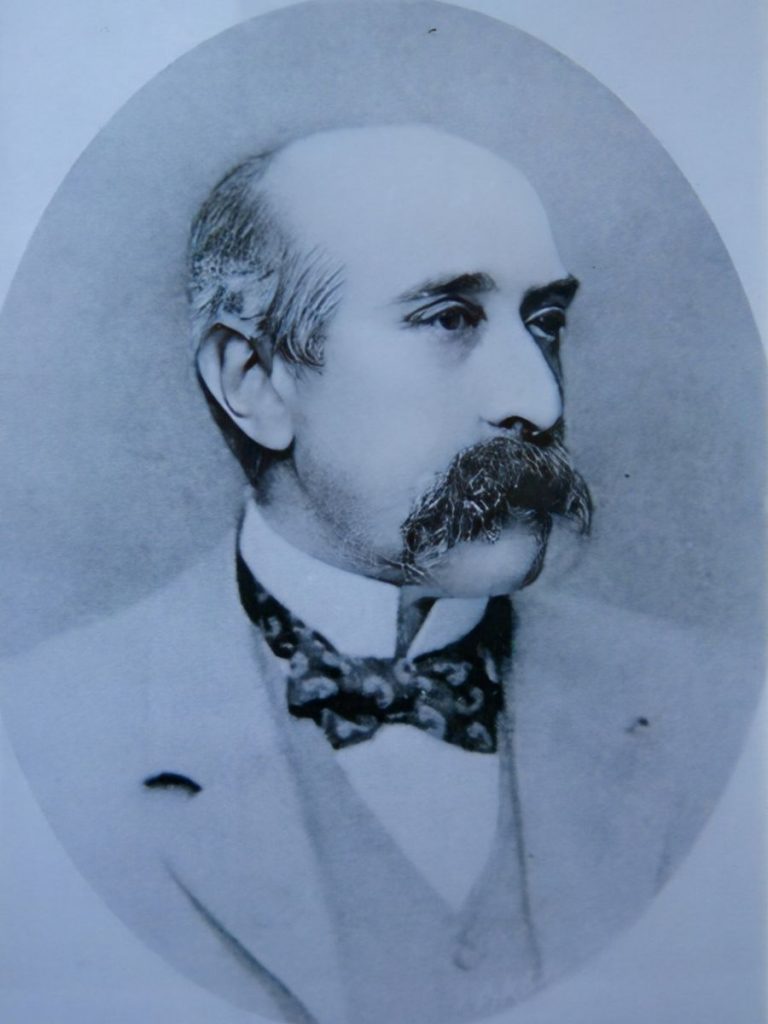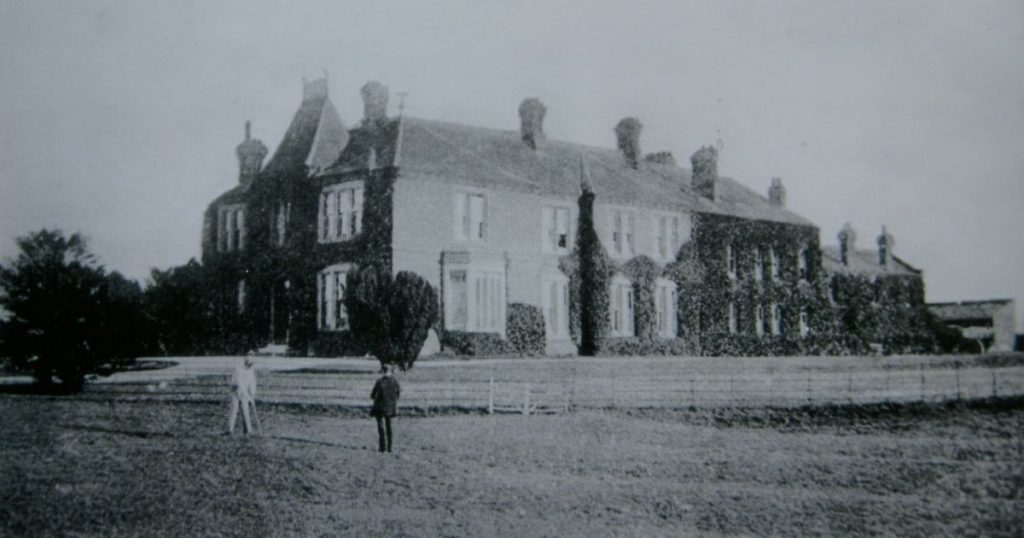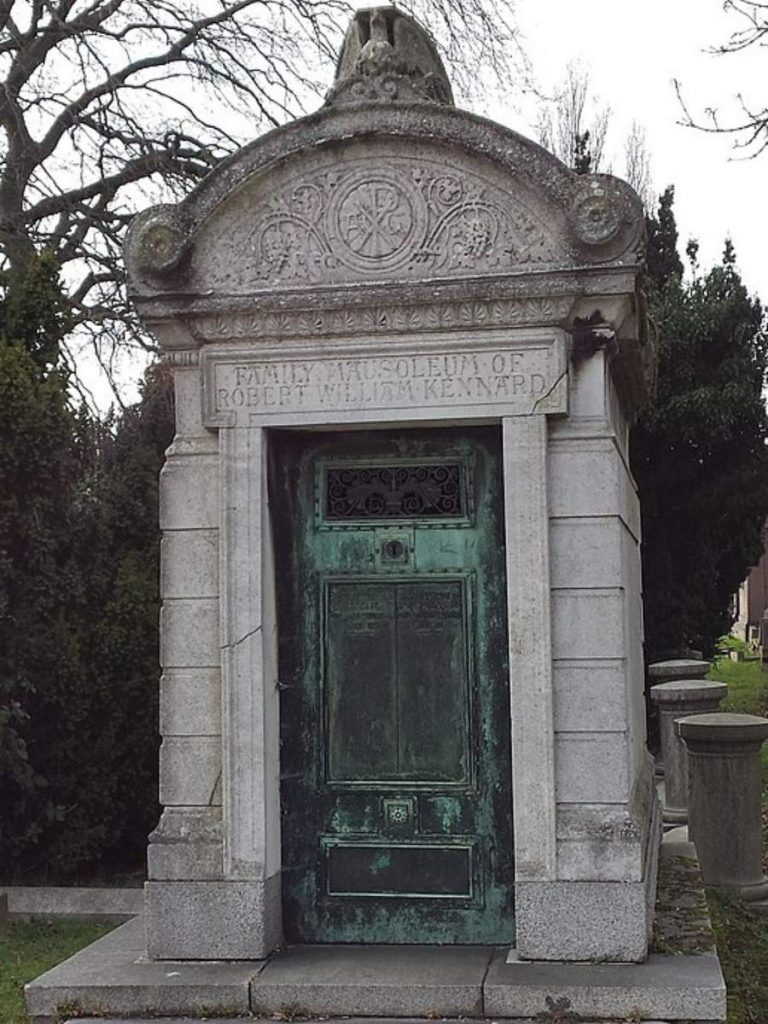The Kennard Pedigree

Edward Kennard (left) was Deputy Lieutenant of Leicestershire and a justice of the peace. He lived at ‘The Barn’ (below). This was a large property situated on the hill off Shrewsbury Avenue in Little Bowden, Market Harborough. He had travelled in America during the Civil War (1861 – 1865) and entered Richmond, Virginia with the Northern troops. He won the second prize in the 1,000 miles motor competition in 1900 and was an ardent motor cyclist. Edward Kennard’s paintings in watercolours and oils were regarded as treasures in leading art circles, especially those done on china. Of which he had a unique collection. He also won several prizes for photography and was a well- known sporting novelist.

Edward was one of ten children born to Robert William Kennard MP of Gatcombe Park, Isle of Wight and Mary Challis daughter of Thomas Challis, Lord Mayor of London. Below is a sample of their colourful wallpaper, dated 1842, which was obtained from the Victoria and Albert Museum a few years ago. It once adorned a room in Gatcombe House.

Blaenavon Iron Works
The Kennard family owned the Blaenavon Iron Works in South Wales as well as the Falkirk Iron Co. Ltd. in Scotland. Robert William Kennard (1800 – 1870) was a major shareholder and director. His son Edward (1842 – 1934) was also a director and his grandson Malcolm was chairman. In 1836 the works was bought by Robert. At the age of 23, his son Edward became a prominent player in the cultural life of the town of Blaenavon. He believed that leisure was a necessity of nature and that entertainment could contribute positively to the moral and intellectual instruction of the working class. To this end he introduced ‘Penny Reading’ to Blaenavon library in the mid-1860s.
Edward Kennard and his sons Lionel (born 1872) and Malcolm (born 1874) would stay at Blaenavon House (Ty Mawr) when there on business and during the grouse shooting season in the summer. The house was extended in 1839 to increase its accommodation as a hunting lodge. Many of the local gentry and even European nobility would stay at Blaenavon House for several weeks. From the late 1860s the property was the official residence of Edward Kennard. He had become a director of the Blaenavon company. It remained his residence during his tenure as High Sheriff of Monmouthshire in 1876.
Edward married novelist Mary Laing on 19 April 1870 at St Nicholas Church Brighton. The newly-weds travelled to South Wales and were surrounded by 12,000 people from Blaenavon. The the nearby towns proceeded to Blaenavon House to celebrate the event in the grounds. Edward gave a speech in which he declared that through marriage he was now ¼ Welsh, ¼ English, ¼ Irish and ¼ Scottish and wholly ‘Blaenavon’. However, in the 1920s the Kennard family became less involved with Blaenavon and retired to Bradford-on-Avon.
Little Bowden
They also owned ‘The Barn Estate’ in Little Bowden. This was purchased during the latter part of the 19th century from the 18th Earl of Shrewsbury, whose principal residence is Alton Towers in Staffordshire. It was chosen due to its fine situation for hunting and golfing. Edward hunted with the Pytchley and Mr. Fernie’s hounds. Incidentally, Blaenavon was created a World Heritage site in 2000.
Edward’s son Malcolm became a royal navy captain. In the admiralty on 21st April 1896 it was noted that acting Sub-Lieutenant Malcolm Alfred Kennard had been confirmed as a sub-lieutenant in her majesty’s fleet. His brother, Captain Lionel Kennard joined the 15th King’s Hussars.
It was interesting to note that when tracing the pedigree of this prestigious family I discovered that Edward Kenna’s first cousin, Coleridge John Kennard (1828 – 1890) was the great grandfather of Lieutenant Colonel Sir George Arnold Ford Kennard (1915 -1999) who married twice. Firstly to Cecilia Violet Cokayne Mounsell, three times great granddaughter of King William IV and Dorothea Bland. Then secondly to Georgina Phillips, daughter of Sir Harold and Lady Zia Wernher of Thorpe Lubenham Hall, Lubenham, Leicestershire. Georgina was the great-great-granddaughter of Czar Nicholas I of Russia. She was also the grandmother of Hugh Grosvenor the present and 7th Duke of Westminster.
When Robert Kennard died in 1870 he had a family mausoleum built in the fashionable London Kensal Green cemetery. It was Grade II listed in 2001 and constructed of Portland stone with a heavy bronze door, as shown in the picture below.

The Kennards were indeed a family of great influence, not only here in Leicestershire but throughout the United Kingdom, with their links to so many notable figures from Victorian society through to the present day.
Glyn Hatfield




 Rotary Club Charity Golf Day – June 2024
Rotary Club Charity Golf Day – June 2024

